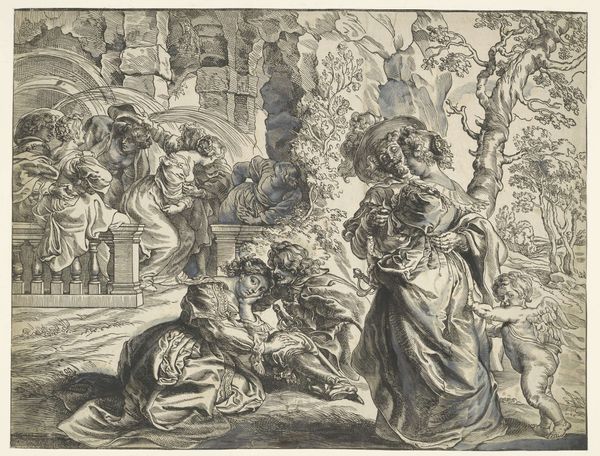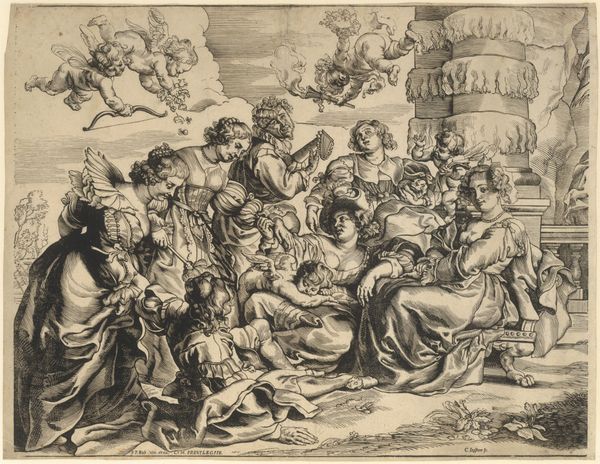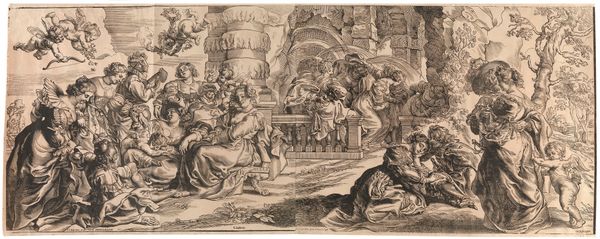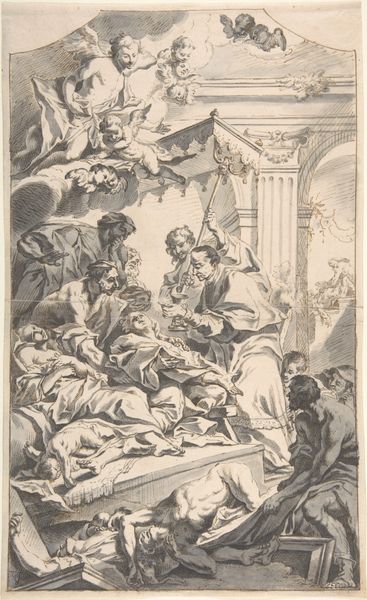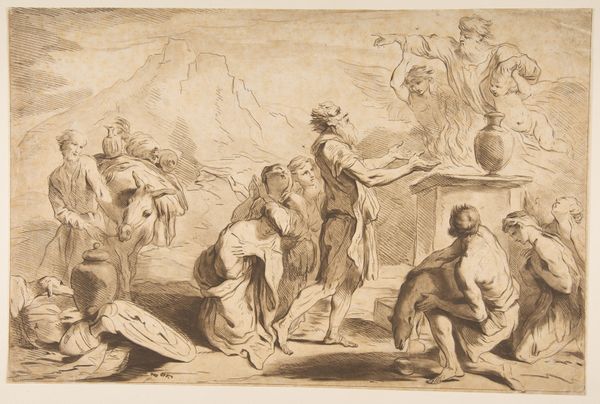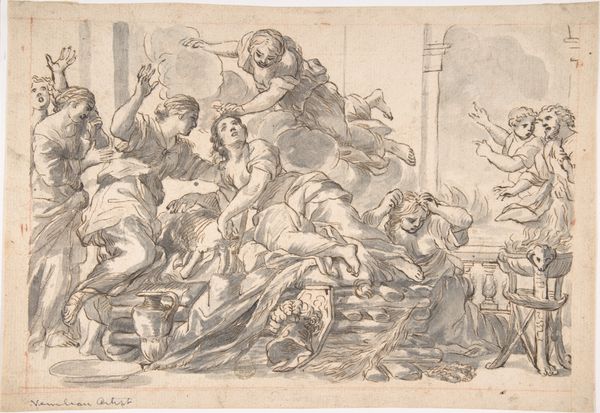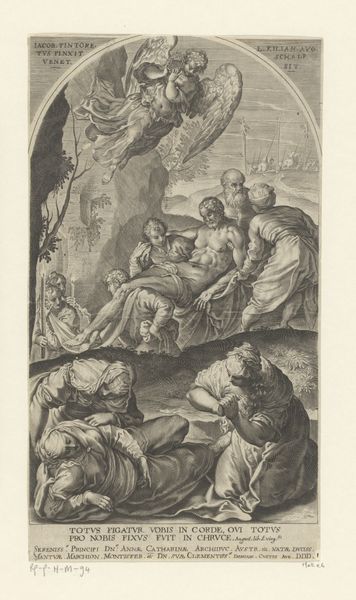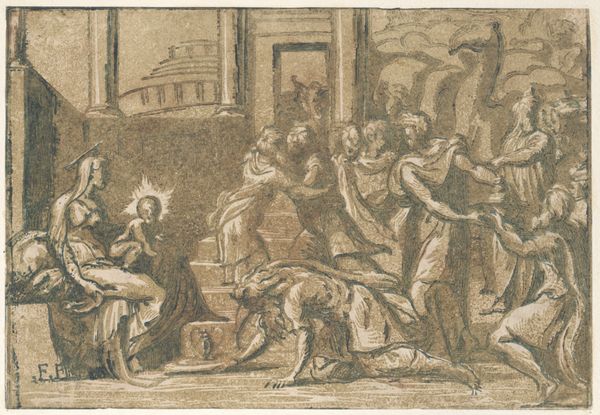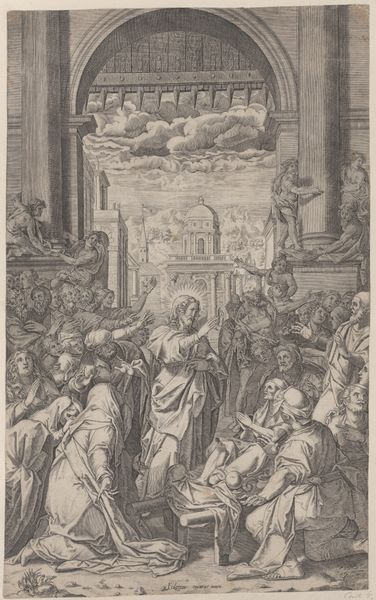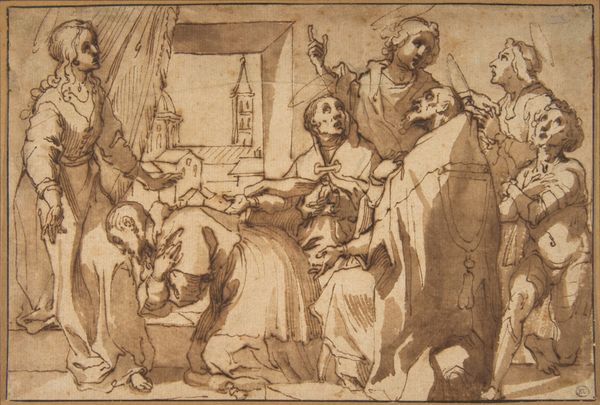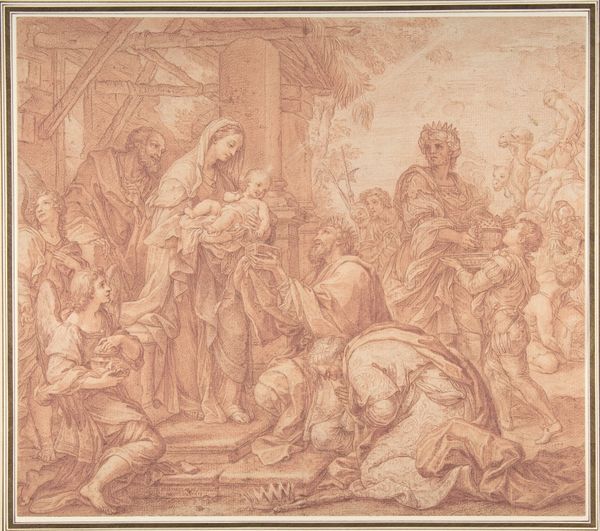
drawing, print, engraving
#
drawing
#
baroque
# print
#
figuration
#
line
#
genre-painting
#
engraving
Dimensions: Sheet: 18 1/8 x 21 1/16 in. (46 x 53.5 cm) Mount: 22 x 28 in. (55.9 x 71.1 cm)
Copyright: Public Domain
Curator: Standing before us is “The Garden of Love (right block),” an engraving dating back to the 1630s and attributed to Christoffel Jegher. Editor: My first impression is that of a teeming, almost overwhelming abundance. It feels celebratory, though the fine, closely worked lines of the engraving medium render the figures in a decidedly material way. Curator: Absolutely. The use of line is remarkable; notice how the density of hatching defines form and shadow, creating a vibrant surface. Semiotically, the clustered figures and verdant landscape can be interpreted as emblems of baroque exuberance. Editor: Precisely, but let’s consider Jegher’s process. Engraving is a painstaking craft, each line etched into the metal plate through considerable labour. It brings a tangible element to this depiction of love and leisure. Look at the varied fabrics. Curator: The textural details are extraordinary, rendered only through tonal variations and subtle linear shifts. Notice how this creates dynamism in the overall composition. A tension forms between its meticulous design and thematic intentions of pleasure. Editor: Right, the composition hints at the patronage. Engravings like this were made for wider dissemination, potentially available to the wealthier public who were eager to emulate aristocratic culture through prints. Were these gardens common in estates? Curator: One would assume so. Returning to the form, note the spatial ambiguities achieved through overlapping figures and meticulously rendered background details. Editor: This complicates, indeed destabilizes, any facile reading of blissful leisure; such laborious artifice underscores how these ideals, printed over and over, circulate through a specific social machinery. The materiality informs the subject; in turn, both expose period assumptions on labour, pleasure, and access. Curator: Very insightful! The convergence of form and context here highlights the engraving as more than just a picture, its lines transcend mere representation and convey period's sensibilities. Editor: Exactly! Thinking about how its reproduction also allowed, still allows for different access points to this Baroque world.
Comments
No comments
Be the first to comment and join the conversation on the ultimate creative platform.
